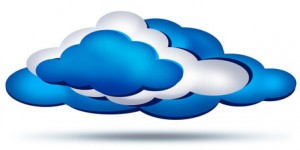
It seems there is often confusion surrounding the terms ‘hosted’ and ‘cloud’ when it comes to contact centre systems. Some vendors have clearly exacerbated this confusion by using the words interchangeably and claiming to offer cloud systems when in fact they are ‘hosted’ versions of legacy on-premise systems. Make no mistake however, they are very different.
Let’s take a closer look at what the difference is between cloud and hosted. A true cloud solution has two key attributes: firstly it is charged on an opex model, and secondly it needs to be multi-tenanted.
With a hosted contact centre service, the provider will host the physical servers running that service somewhere else (typically at the vendor’s data centre or at a third party data centre). A hosted service therefore takes away a lot of the internal IT resource issues when compared to legacy on-premise systems but it does not give you the benefits of a true cloud solution. These solutions are usually created by legacy vendors, but only address the first of the two cloud attributes – the charging model.
The vendor will be providing an application over the web that was not originally designed to be hosted. It will have been tweaked and modified to try and fit the SaaS delivery model, rather than having the inherent interconnectivity offered by the cloud, and it will require separate servers and installations for each customer.
The contact centre environment is a rapidly evolving one, with changing customer demands and behaviours constantly driving innovation. Remember that a hosted version of a legacy system is only ever going to be a snapshot in time of whatever functionality that on-premise system has. Any software updates or feature enhancements will need to be scheduled and paid for and it will still need ongoing maintenance, albeit not at your actual premises but wherever the server with your version of the software on it is housed.
This type of system is far less scalable and is ultimately more costly. Access to key new features is inherently going to be more difficult as someone will need to physically update the kit that has your software on it.
On the other hand, the cloud-based model uses mullti-tenant architecture that’s specifically designed for secure and efficient delivery of web-based applications with collaboration and interconnectivity built in from the outset. This gives access to the two key benefits of a true variable pricing model, and also the included ongoing software updates and enhancements.
The cloud contact centre focuses on fast set up and low operating costs through shared services. There is high security and high performance and scalability through instant and seamless scaling of computer resources. This means you as a customer should also be able to increase capacity and scale up when you need to but also scale back down too in line with any seasonal peaks that you may have.
A key thing with cloud is the ability to roll out new features and upgrades quickly and simply without any fuss. This is a crucial factor and a key driver in cloud adoption as legacy systems simply cannot respond quickly to change.
In the early days of cloud, it was typically smaller contact centres that led the way in making use of these benefits in cloud adoption but over the last two years large organisations have also followed suit and reaped the benefits of the cloud.
Earlier this year we conducted some research to survey contact centre decision makers and see where they were in terms of cloud adoption. When we looked at the top drivers for moving to the cloud, 41% of those surveyed stated ‘the need to better service the multi-channel customer’ and for 33% the ability to roll-out new features quickly was a top driver.
It’s clear that for the modern contact centre to be successful, there must be the ability to react quickly to customer demands and paramount to this is the move towards supporting customers via any channel and from any device. This is incredibly challenging with a ‘hosted’ solution and a critical reason why so many are now selecting a true cloud system for their contact centre.

- Visit the Magnetic North Website or
- Download the Research White Paper
Sonia Rabone – Marketing Manager at Magnetic North Software



